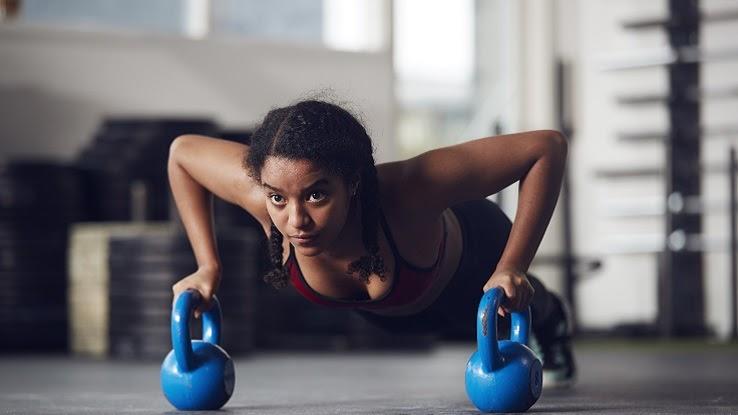
The coronavirus pandemic has changed everything about our daily lives, including the way we approach fitness, mental health and overall wellness. As the public health crisis stretched into its second year, many of us have had to develop new strategies to stay active and health-conscious in 2021.
As we collectively rethought how to exercise, track our health and deal with stress in response to this year’s challenges and uncertainty, our individual changes have resulted in new fitness & wellness trends. From micro-tracking our biometrics to developing family-friendly fitness routines, here are 7 of the biggest health trends that shaped our wellness routines this year.
Protecting Our Mental and Emotional Health
There’s been a renewed focus on mental and emotional health in recent years — but it rightfully became a primary focus for many of us in 2021. Navigating ever-shifting safety guidelines in order to keep our community members safe, especially for those who live alone, has been tough — and that’s not to mention the other stressors that many of us have experienced, from losing loved ones to worrying about joblessness. The pandemic has caused its own different type of stress, and dealing with that anxiety will become an even more important focus as the health crisis endures.

While a traditional way of getting help — visiting a therapist’s office — continued to be a challenge throughout most of the year, we’re finding other ways to cope with mental health challenges. Apps like Calm and Headspace exist to help us learn stress-reduction techniques like mindfulness, breathing exercises and meditation routines that promote improved emotional intelligence. Other apps and sites like BetterHelp have given us online connections to skilled therapists and counselors so we can talk through our issues and get real solutions to start feeling better.
Micro-Tracking Our Fitness Levels
As people look to learn more about how exercise changes their bodies, micro-tracking various biometrics has become a vital part of giving us a deep look into our daily habits. Brands like Fitbit and Apple created fitness-tracking watches and other devices that collect data on daily steps taken, calories burned and other physiological attributes. MyFitnessPal and other apps help us track our food and nutrients with the touch of a button.
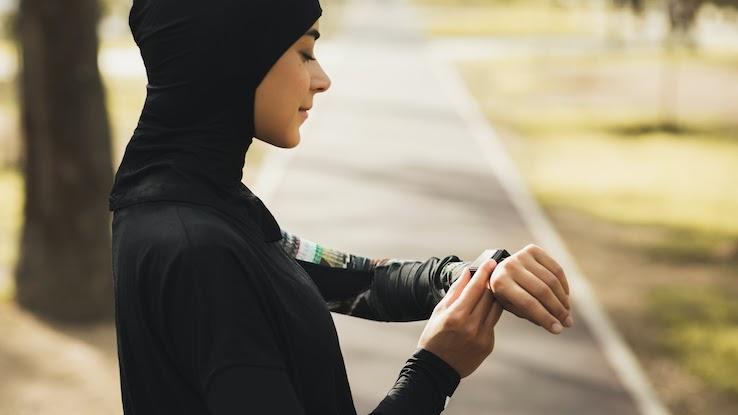
This trend only continued to rise through 2021 as these apps and watches became able to to deliver even more data to consumers. For example, the new Fitbit Sense now tracks skin temperature, and the Apple Watch Series 6 has a blood oxygen sensor. It’s more data than we even knew we needed, but, now that we can get it, we’re definitely going to use it.
Ayurveda Becoming More Mainstream
Another rising trend in health and wellness in 2021 was the growing adoption of principles from the holistic treatment modality called Ayurveda. This treatment originated in India, where it’s been used for thousands of years. Ayurveda promotes a healthy balance between the mind, body and spirit with a focus on getting to the root causes of wellness disruptions using natural treatments and health routines.

People who regularly practice Ayurveda use herbs and natural compounds, yoga and lifestyle modifications to prevent illness and heal other ailments. With our focus shifting more toward natural and in-home treatments these days, Ayurveda will likely continue to rise in 2022 and beyond.
Exercising in the Open Air
While some of us may still feel uncomfortable about being around others in the gym, we’re embracing exercising outside — while following proper social distancing guidelines, of course. Many of us have continued to walk, jog and even participate in outdoor fitness classes that are allowing us to get and stay fit while staying safe.
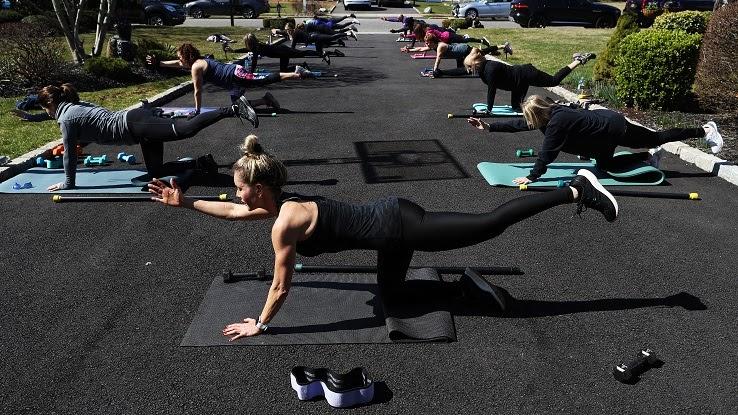
It’s anticipated that outdoor classes will continue to be a big trend in 2022, as many of us are finding that we prefer the freedom, sights and sounds during workouts in the great outdoors.
The Rise of “Snackable” Workouts
“Snackable” workouts continue to be a big hit. People are exercising for shorter amounts of time throughout the day instead of focusing on one hour-long workout. According to a 2018 study published in the Journal of the American Heart Association, doing several short workouts throughout the day and week is just as effective as doing one long workout — as long as those minutes add up to between 150 and 300 each week. A part of these bite-size workouts includes a focus on high-intensity interval training (HIIT), which consists of shorter workouts with short moments of intensity and brief moments of active rest to burn more fat.
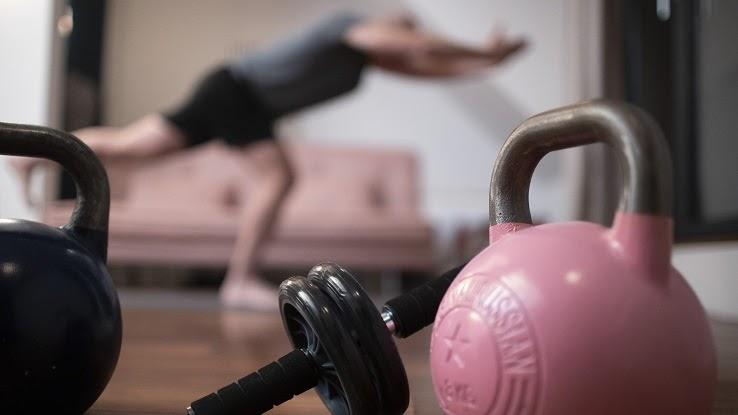
If you’re quite busy during the day, these bite-sized workouts are a trend that’ll be helpful during and after the pandemic. As long as you get in a few pockets of exercise a day, you can still burn the same number of calories and enjoy the wellness benefits that come with regular workouts.
Sleep Care as Self-Care
In recent years — and especially during this pandemic — you might’ve started hearing people say that “sleep-care is the new self-care.” The mentality of “grinding while others sleep,” meaning you’re still pushing yourself to get things done, even if it comes at a cost to your wellbeing, is quickly dying. Sleep is consistently, scientifically proven to be vital for increased productivity and focus during the day, which is even more important while many of us are still working from home.

It’s not just the amount of sleep you get per night that matters, either. The quality of your sleep is also critical. Keeping your bedtime routine consistent — which can include adding sleep sounds, cutting off electronics an hour before you go to sleep and sticking to an actual bedtime — is key.
Getting the Entire Family Involved
2021 also saw an increase in families working toward their health and fitness goals together. Because many of us continued to stay mostly homebound throughout 2021, it became even more important to keep everyone in our households active and healthy. Family-centered fitness activities helped us break up the monotony of days spent working from home and attending virtual classes, and also boosted our mental health.
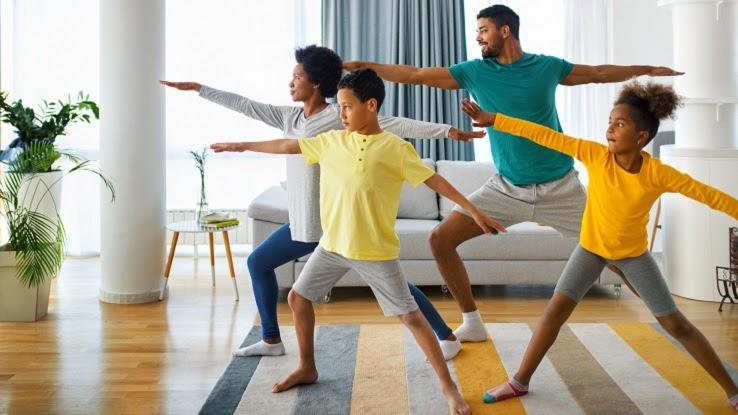
In 2022, this trend opens the door for growth in fitness programming for the entire family to do together. Not only does this promote physical and mental health and wellness, but it also promotes strong family bonds and healthy relationships. That can (and should!) continue even post-pandemic.
Resource Links:
https://www.cdc.gov/coronavirus/2019-ncov/daily-life-coping/managing-stress-anxiety.html
https://www.ahajournals.org/doi/full/10.1161/JAHA.117.007678





